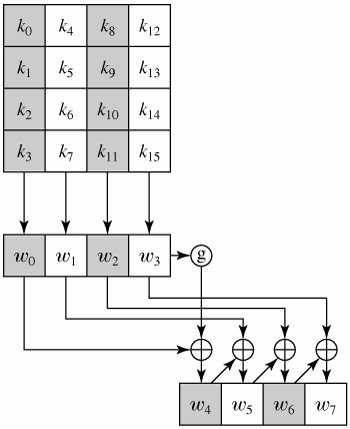How Is Aes Key Generated
Jul 28, 2018 Now that we’ve covered that part, let’s move on to how you can use Powershell to (1) generate and store a 256-bit AES key, (2) encrypt the password for a User Account using that AES key, and (3) use that AES encrypted password in. SHA256 Hash Generator. This online tool allows you to generate the SHA256 hash of any string. SHA256 is designed by NSA, it's more reliable than SHA1. Enter your text below: Generate. Password Generator. Treat each line as a.
This class provides the functionality of a secret (symmetric) key generator.Key generators are constructed using one of the getInstance class methods of this class.
KeyGenerator objects are reusable, i.e., after a key has been generated, the same KeyGenerator object can be re-used to generate further keys.
There are two ways to generate a key: in an algorithm-independent manner, and in an algorithm-specific manner. The only difference between the two is the initialization of the object:
- Algorithm-Independent Initialization
All key generators share the concepts of a keysize and a source of randomness. There is an
initmethod in this KeyGenerator class that takes these two universally shared types of arguments. There is also one that takes just akeysizeargument, and uses the SecureRandom implementation of the highest-priority installed provider as the source of randomness (or a system-provided source of randomness if none of the installed providers supply a SecureRandom implementation), and one that takes just a source of randomness.Since no other parameters are specified when you call the above algorithm-independent
initmethods, it is up to the provider what to do about the algorithm-specific parameters (if any) to be associated with each of the keys. - Algorithm-Specific Initialization
For situations where a set of algorithm-specific parameters already exists, there are two
initmethods that have anAlgorithmParameterSpecargument. One also has aSecureRandomargument, while the other uses the SecureRandom implementation of the highest-priority installed provider as the source of randomness (or a system-provided source of randomness if none of the installed providers supply a SecureRandom implementation).
In case the client does not explicitly initialize the KeyGenerator (via a call to an init method), each provider must supply (and document) a default initialization.
Every implementation of the Java platform is required to support the following standard KeyGenerator algorithms with the keysizes in parentheses:
- AES (128)
- DES (56)
- DESede (168)
- HmacSHA1
- HmacSHA256

You may generate an RSA private key with the help of this tool. Additionally, it will display the public key of a generated or pasted private key.
Description
Aes Key Generator
RSA is an asymmetric encryption algorithm. With a given key pair, data that is encrypted with one key can only be decrypted by the other. This is useful for encrypting data between a large number of parties; only one key pair per person need exist. RSA is widely used across the internet with HTTPS. Dragon age product key generator.
To generate a key pair, select the bit length of your key pair and click Generate key pair. Depending on length, your browser may take a long time to generate the key pair. A 1024-bit key will usually be ready instantly, while a 4096-bit key may take up to several minutes. For a faster and more secure method, see Do It Yourself below.
CryptoTools.net does not yet have a tool for facilitating the encryption and decryption of data using RSA, but you may Do It Yourself with the instructions below.
Do It Yourself
For these steps, you will need a command line shell with OpenSSL. Ideally, you should have a private key of your own and a public key from someone else. For demonstration, we will only use a single key pair.
What Is Aes Key
Generate Private Key
Run this command to generate a 4096-bit private key and output it to the private.pem file. If you like, you may change the key length and/or output file.

How Key Is Generated In Aes Algorithm
Derive Public Key
Given a private key, you may derive its public key and output it to public.pem using this command. (You may also paste your OpenSSL-generated private key into the form above to get its public key.)
Encrypt Data
We can now use this key pair to encrypt and decrypt a file, data.txt.
Aes Key Generation
Decrypt Data
Given the encrypted file from the previous step, you may decrypt it like so.